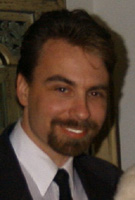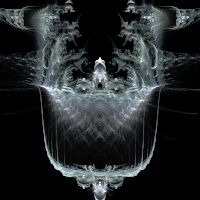|
| |
Print This Page
|
Click to View All Speakers
|

Bill Scott
|
Bill Scott is a co-investigator of a research project studying somatization disorders at UCLA’s Neuropsychiatric Institute with Lobsang Rapgay, Ph.D. He’s in the design process of a study investigating brain states during mindfulness meditation with Jeffery Schwartz, M.D. and Barry Sterman, Ph.D. He recently developed a new neuroimaging technology that creates a fractal signature from EEG and is successfully utilizing this technology as a form of EEG biofeedback in a process termed BrainPaint®. He is the first author and principal investigator of a controlled study on addictions (n=121) which was published in August 2005 in The American Journal of Drug and Alcohol Abuse, with David Kaiser, Ph.D, Siegfried Othmer, Ph.D, and Steven Sideroff, Ph.D.
Bill was also the principal investigator and first author of an addiction research project that yielded a 79% success rate with Native American alcoholics. This study was with Dr. Eugene Peniston (in press). An interview with Bill by the Psychiatric Times was published as a feature article. Bill and David Kaiser presented research at the American Association for the Advancement of Science with Dr. David Kaiser. He trained the researchers Dr. John Gruzelier and Dr. Tobias Egner (members of Department of Cognitive Neuroscience and Behaviour, Imperial College Medical School) in the use of alpha-theta protocols. The results of this research project so improved music abilities among Royal Conservatoire of Music students that the Conservatoire adopted these protocols into the school’s curriculum.
Bill has been published in the January 2000 issue of Clinical Electroencephalography (EEG), an official journal of the EEG and Clinical Neuroscience Society (ECNS). He contributed a chapter on alpha-theta EEG biofeedback in Jim Robbins' Book, "A Symphony in the Brain." He has presented his research and has taught workshops with Tom Brod, M.D. on anxiety disorders at three American Psychiatric Associations annual conventions.
In association with Michael Hoffman, Bill is also currently involved with the Narcotics Division of the American Embassy in South America where they are teaching their protocols to other researchers in order to quickly replicate their work in Latin America. He participated in the 4th annual Meeting of Experts on Demand Reduction for the Organization of American States.
Bill has been training EEG biofeedback practitioners since 1996 and has taught over two thousand of them at this time. He’s most passionate about evaluating and demonstrating EEG biofeedback’s effectiveness through research, refining assessment, improving protocol selection, measuring outcomes and discovering innovative ways to transfer his knowledge to practitioners and research teams. He’s been in private practice since 2000 in West Los Angeles and Malibu.
|

|
Plenary #231): Bypassing the Mind; "Brainpainting"
Cortical Visual Prosthesis have been dabbled with since 1929 starting with the work of Foerster, O. (1929) Beitrage zur Pathophysiologie der Sehbahn und der Sehsphare. J. Psychol. Neurol., Lpz, 39, 463-485.
Brindley, G.S. and Lewin, W.S. (1968) The sensations produced by electrical stimulation of the visual cortex. J. Physiol., 196, 479-493.
showed a patient could detect patterns from their cortex being stimulated through electrode implants.
My thoughts were, “If the brain in all its complexity can make sense of crude input, what might happen if it's given the chance to output and manipulate complex systems?" “Why is it that we get such good results even from a subject watching a simple bar graph fluctuating, yet we usually see no significant changes in the fast frequencies we have been "rewarding"?” Perhaps it’s because we haven't yet been able to quantify the brains complexity.
Now, years later as computers acceded speeds above 2 gigahertz I've done just that.
This talk will demonstrate the brain's doodling in what I'm calling BrainPaint. We're able to animate these fractal images at speeds greater than 20 per second.
Here's a sample image of thousands of them I've collected.
Details:
Plenary #231): Bypassing the Mind; "Brainpainting"
Co-presenter with Thomas Brod of MYSTERIES OF NF SUCCESS: What's Happening When"Nothing's Happening"?
Contact Info:
Bill Scott
18219 Coastline Drive
Suite #1
Malibu, California 90265
phone:
|